Spring 2025 | Research Presentations & Conference Highlights
This past spring, I had the opportunity to share my research at three exciting conferences—from local symposiums in Nevada to a national gathering of physicists in California. I presented work from two ongoing projects: one focused on waveform accuracy for next-generation gravitational-wave detectors, and the other on early-warning binary neutron star signals for multi-messenger astrophysics.
I’m incredibly grateful for the opportunity to share my work, connect with others in the field, and learn from so many thoughtful researchers and mentors this spring.
2025 Nevada Center for Astrophysics Multi-Messenger Symposium
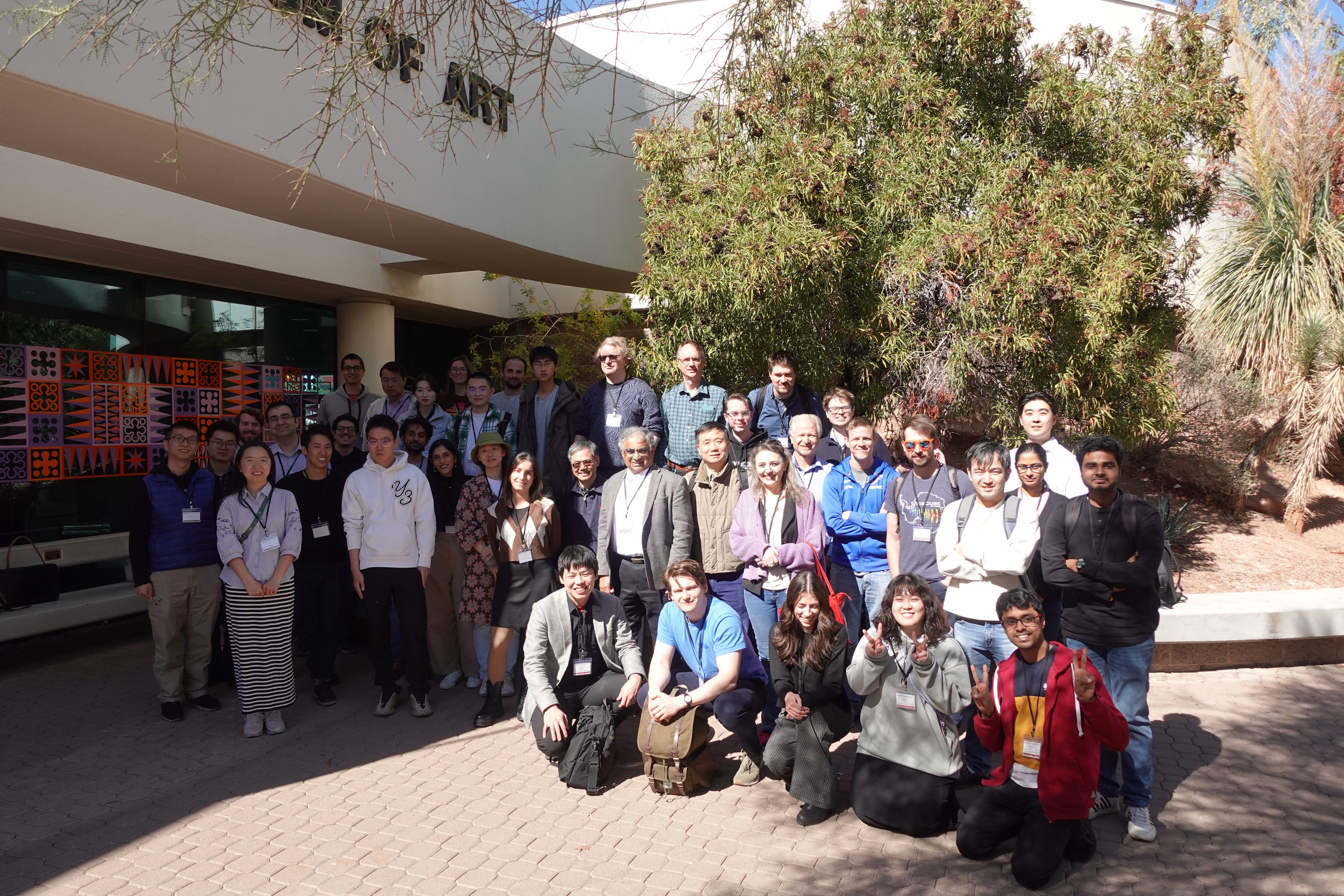
In February, I gave a talk at the Nevada Center for Astrophysics Multi-Messenger Symposium, hosted at UNLV. My presentation focused on evaluating waveform accuracy for next-generation gravitational-wave detectors like Cosmic Explorer and the Einstein Telescope. I shared recent results comparing different waveform models and discussed how systematic errors may impact parameter estimation in future observing runs.
It was exciting to contribute to a local symposium centered on multi-messenger astrophysics, and to engage in cross-institution conversations with researchers from UNR, UNLV and visiting professionals working on everything from gamma-ray follow-up to detector development.
2025 Nevada Space Grant and NASA EPSCoR Statewide Meeting
The 2025 Nevada NASA Programs Statewide Meeting was held on March 10, 2025, at the University of Nevada, Reno – Joe Crowley Student Union.
The Statewide Meeting showcased oral and poster presentations from NASA Space Grant and EPSCoR-funded researchers across the state. I presented a poster on my early-warning binary neutron star (BNS) project, which models how early detection of inspiral signals can improve sky localization and increase the chances of observing prompt electromagnetic emission.
My project combines waveform modeling with practical observability estimates to support coordinated gravitational and gamma-ray observations. I enjoyed connecting with researchers from a wide range of NASA-affiliated disciplines—including Earth science, biology, and engineering—and seeing how our work fits into broader multi-mission goals. My participation in this event was generously supported by the Nevada NASA Space Grant Fellowship Program and Nevada NASA EPSCoR.
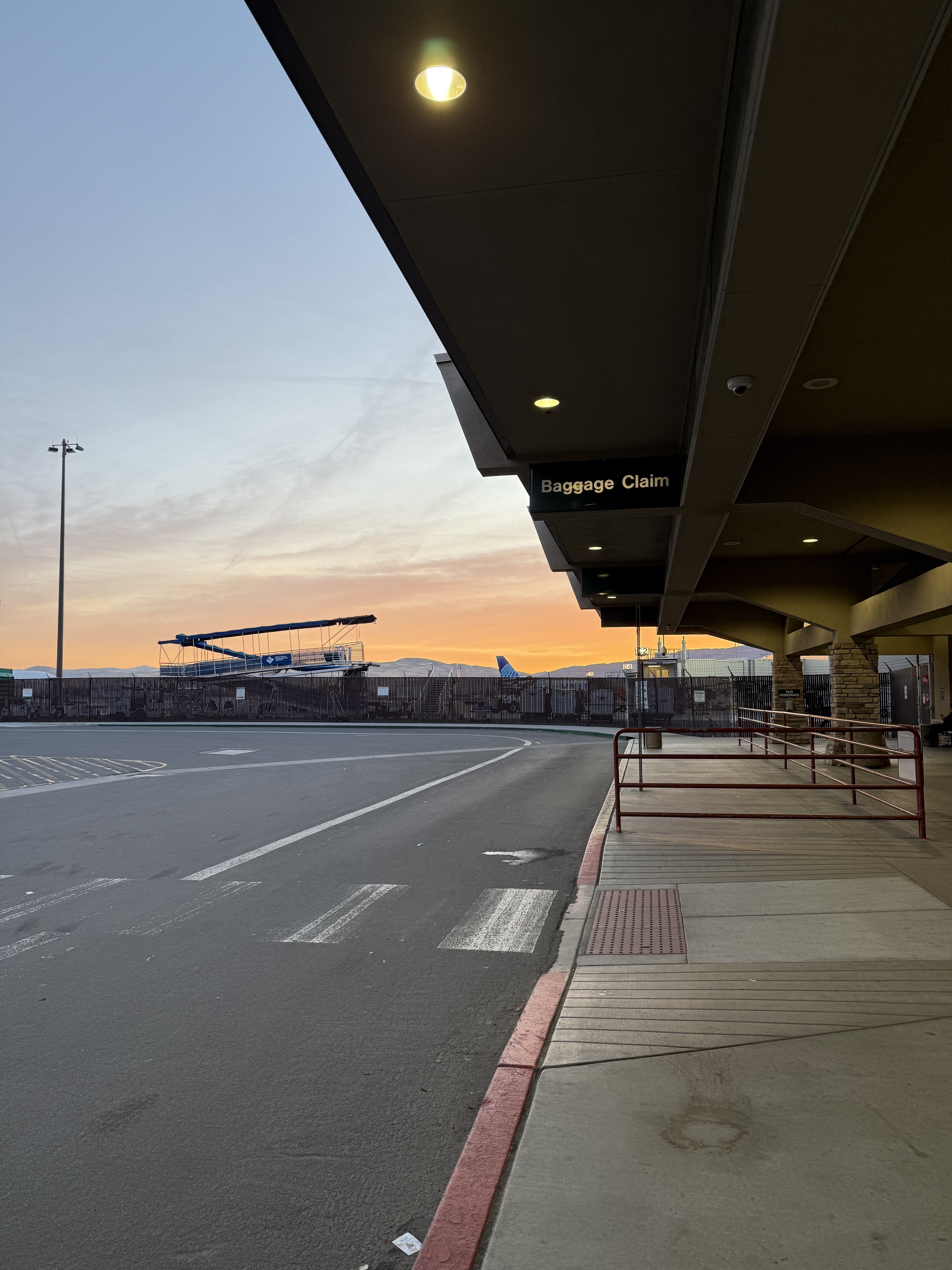
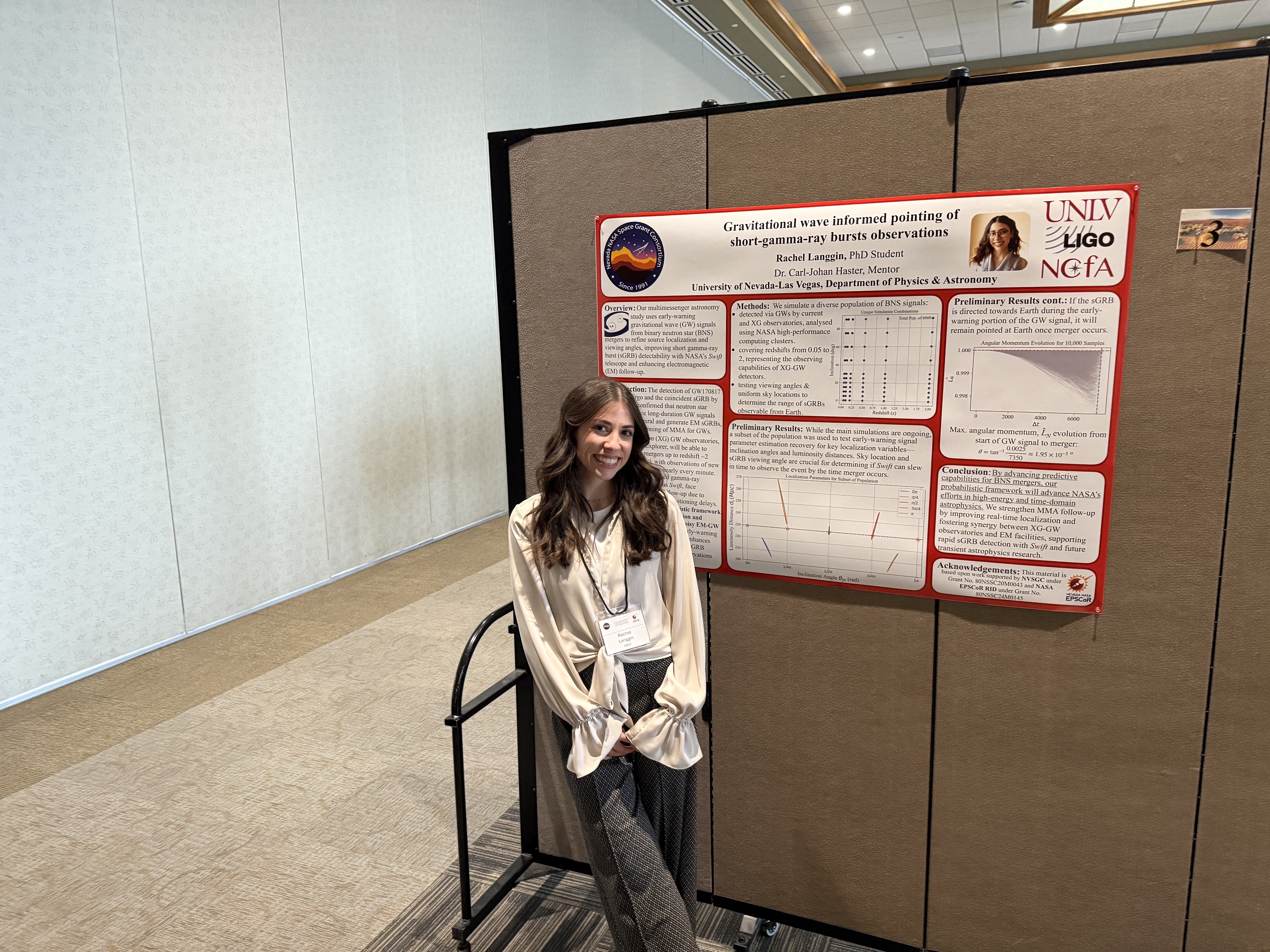
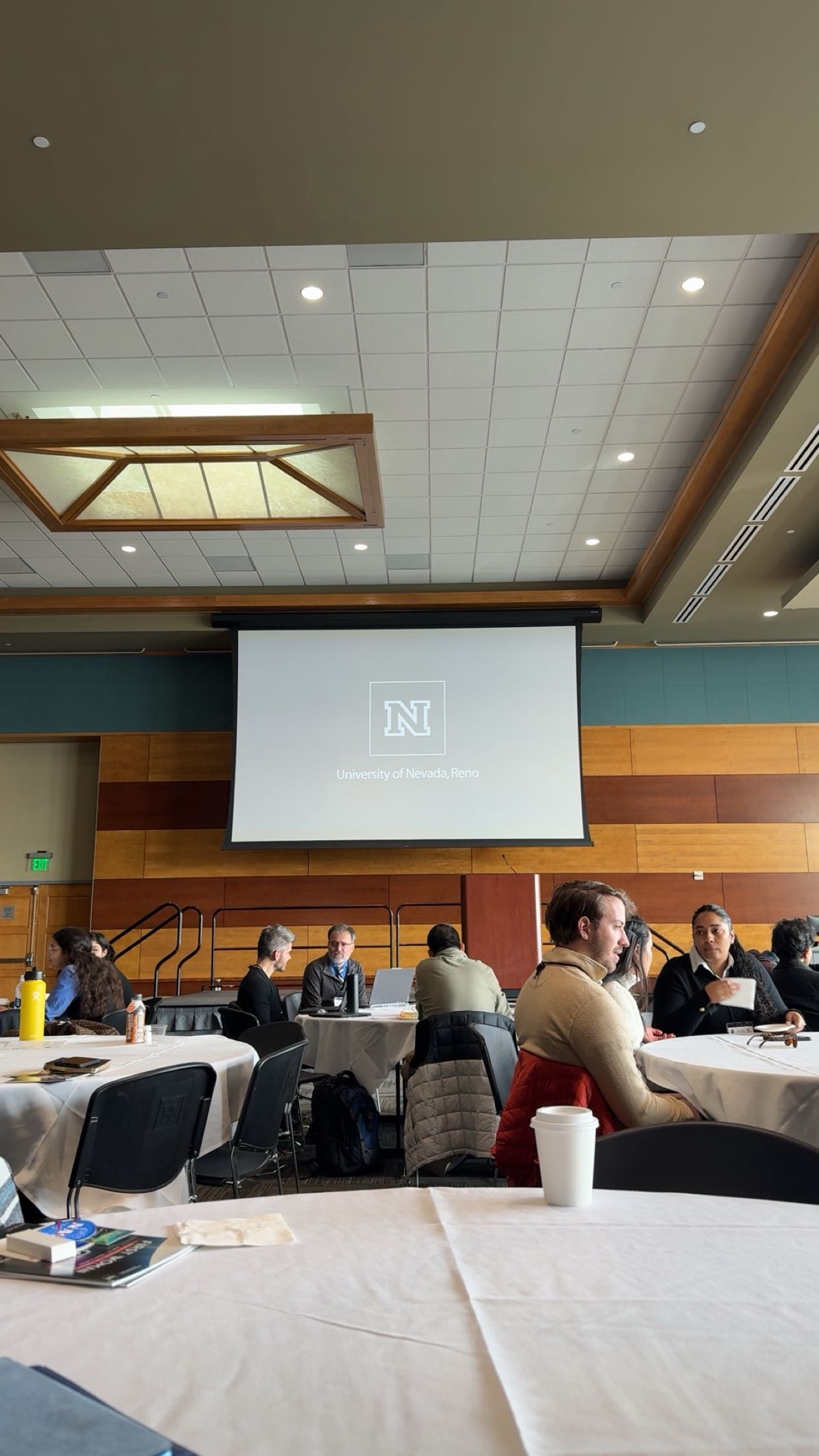
2025 American Physical Society (APS) Global Physics Summit
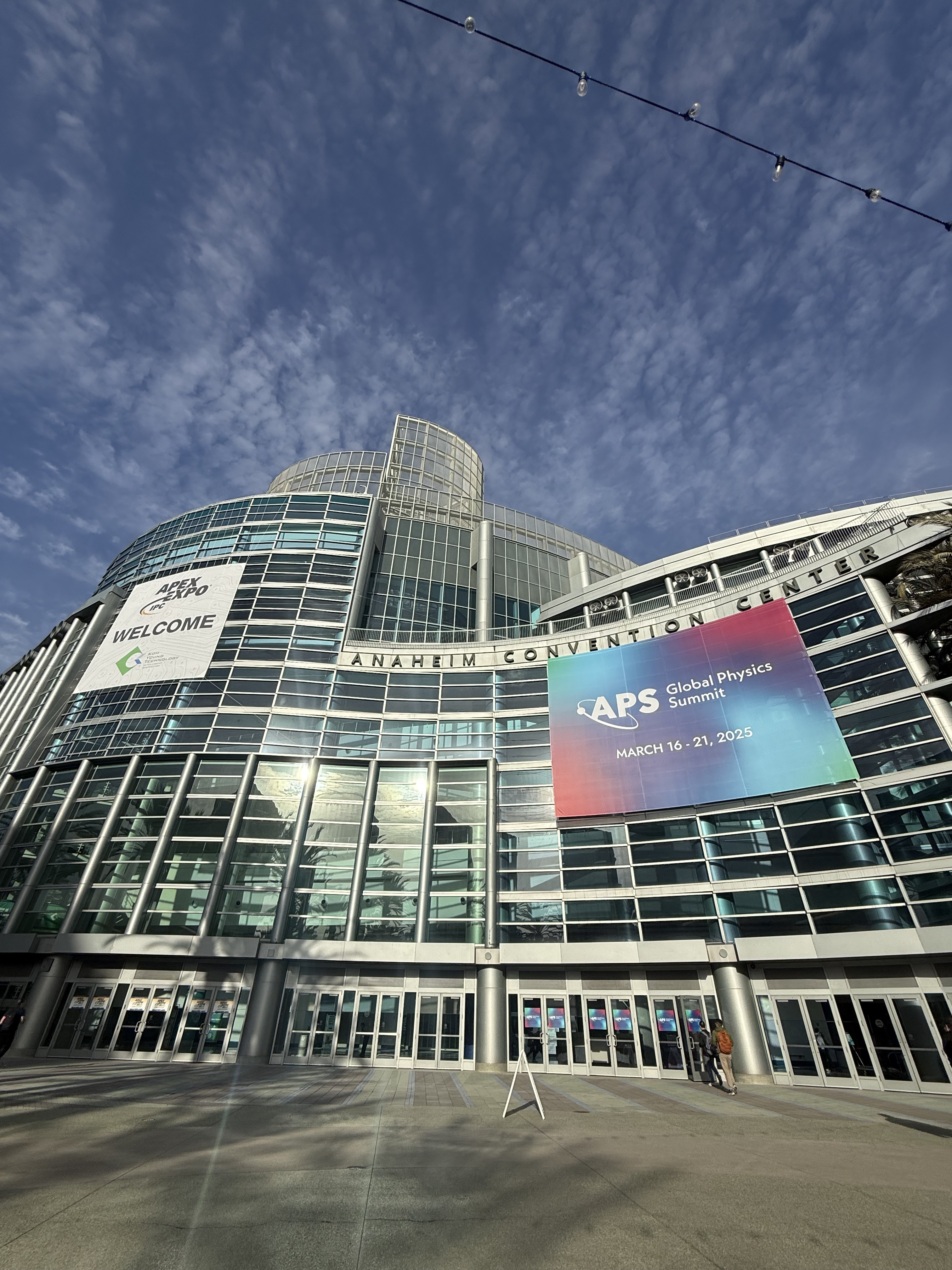
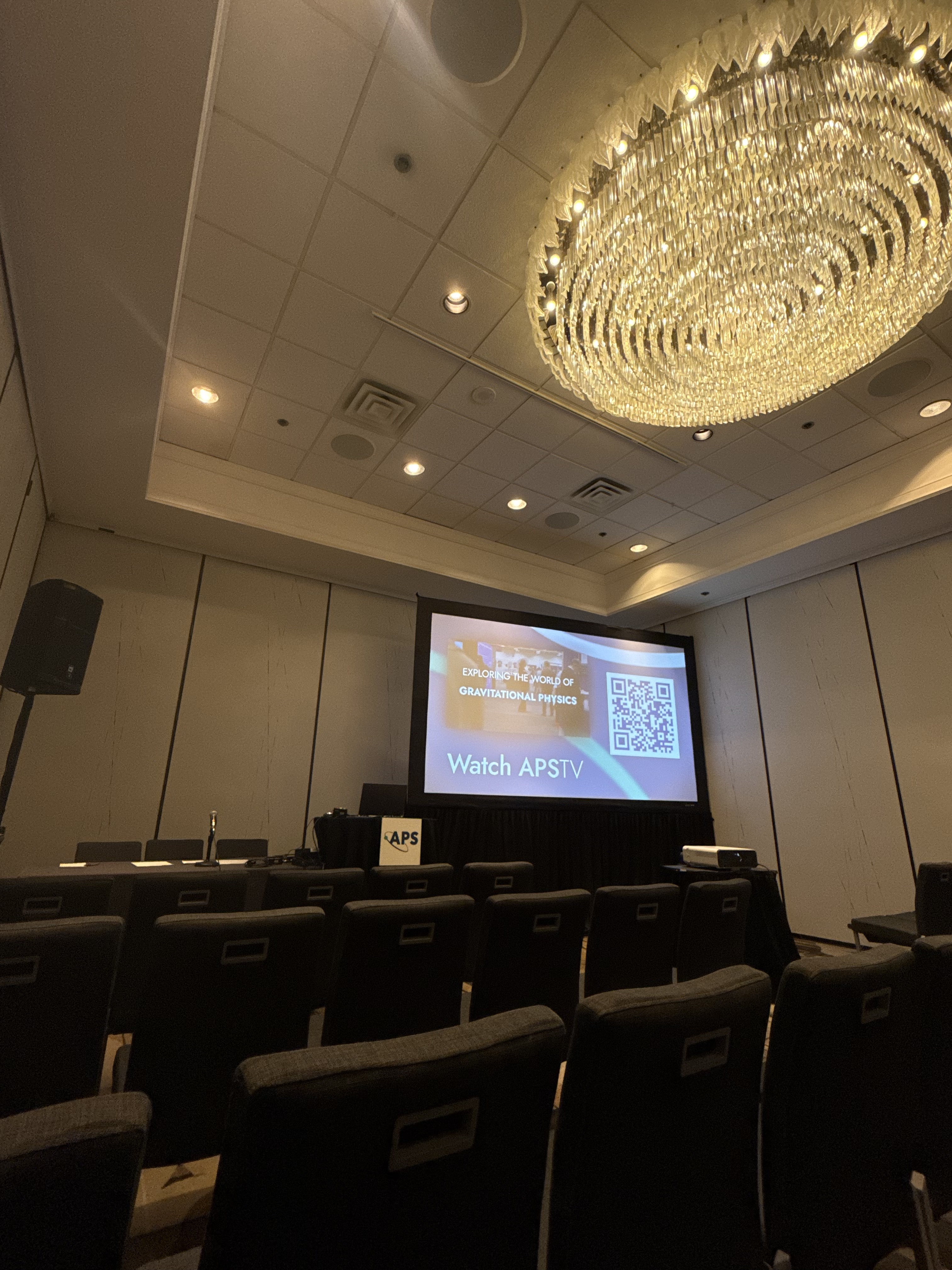
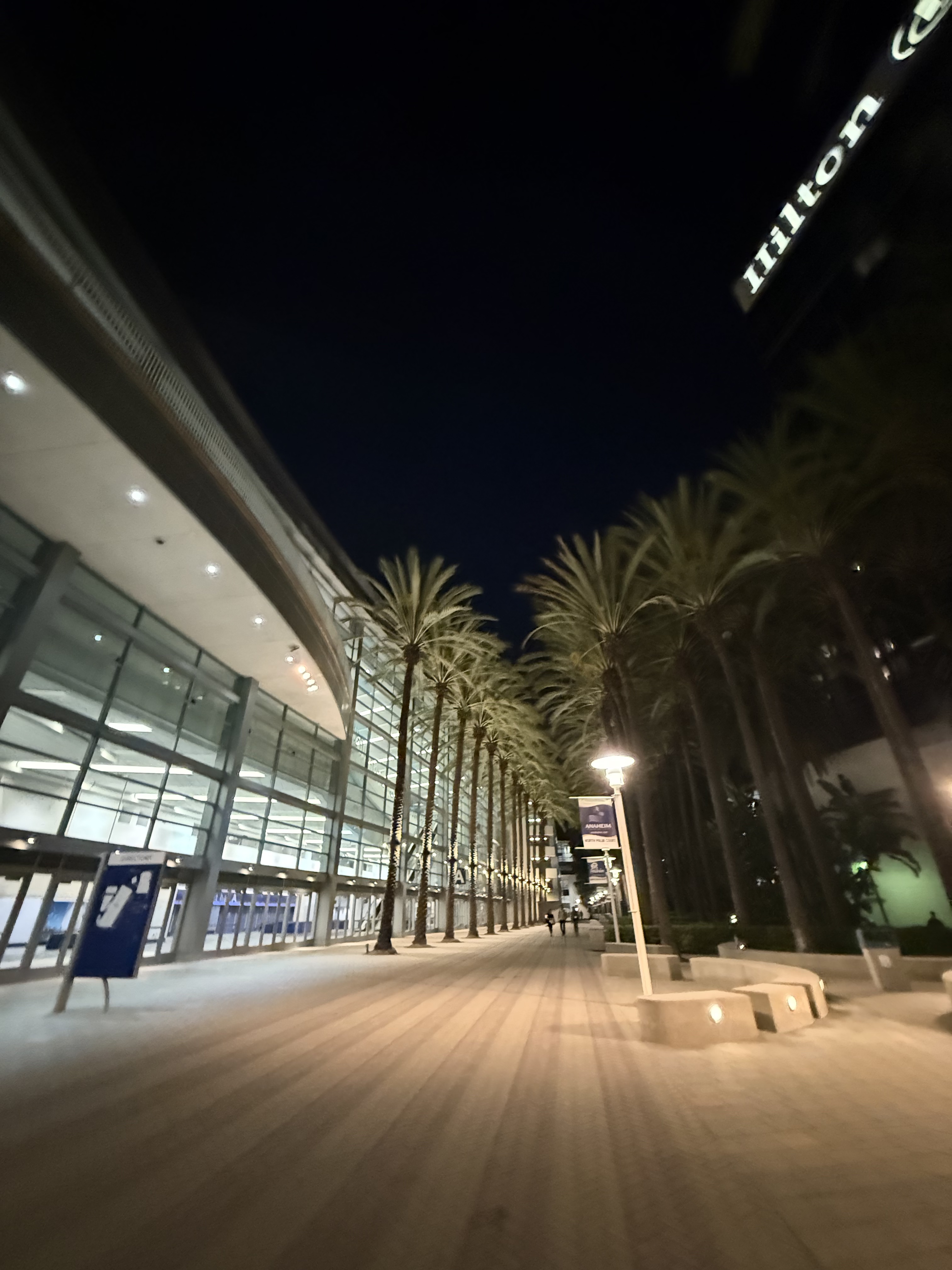
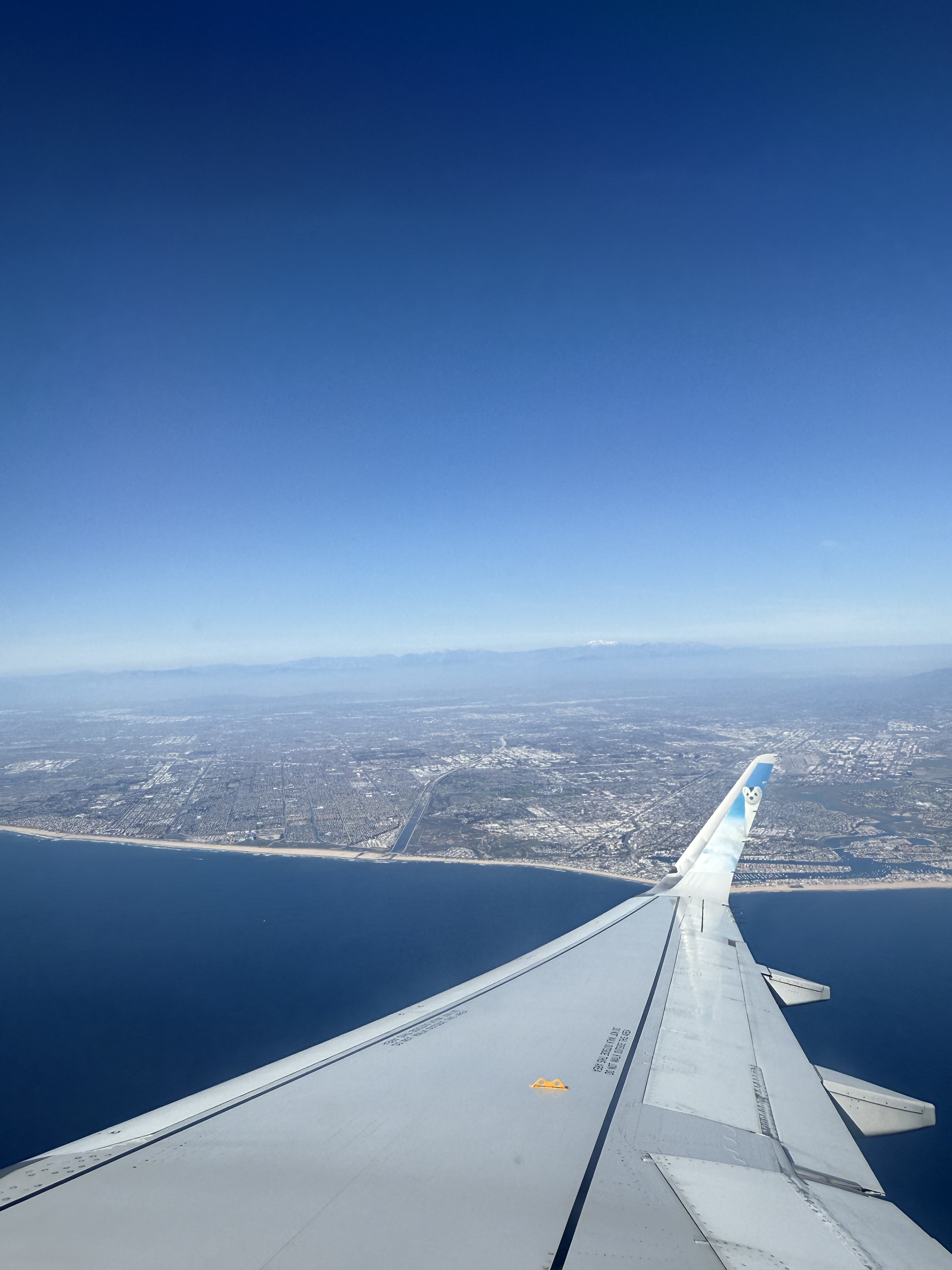
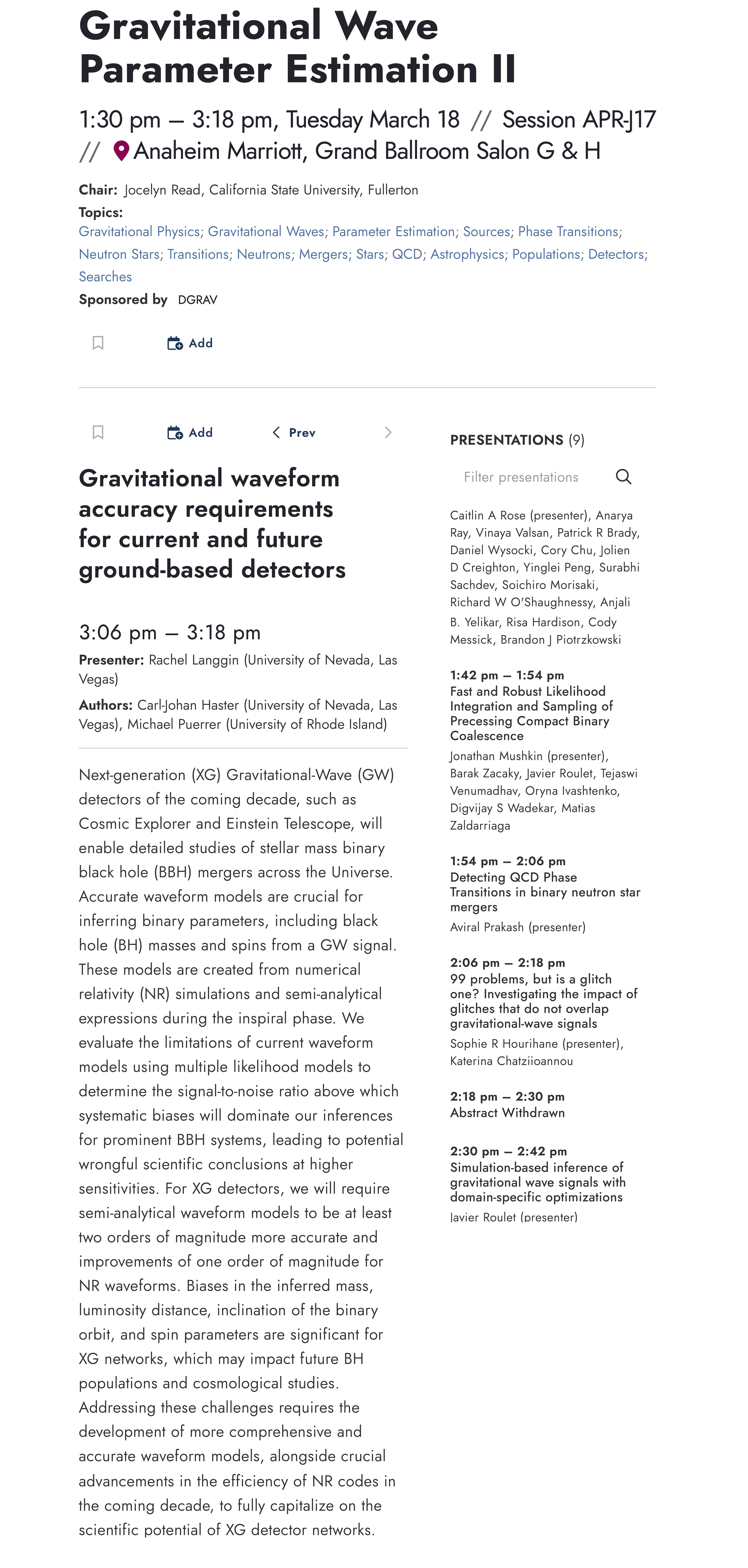
In mid-March, I traveled to Anaheim, CA for the APS Global Physics Summit, where I presented my waveform accuracy project once again—this time to a broader audience of physicists working in gravitational physics, computational methods, and beyond.
I spoke about how waveform systematics impact parameter estimation for future detectors, especially in cases involving precession and high mass-ratio binaries. It was a rewarding experience to bring this work to a national stage, meet other graduate students working on similar problems, and explore connections between waveform modeling and tests of general relativity. Travel to this conference was supported by a mini-travel grant from the American Physical Society.
Want to learn more?
Check out some more posts you might like to read next: